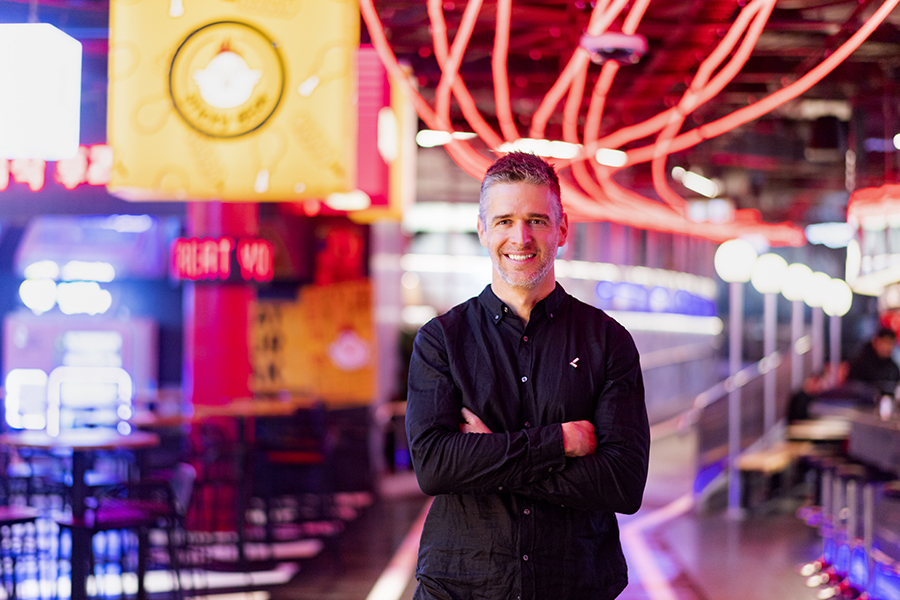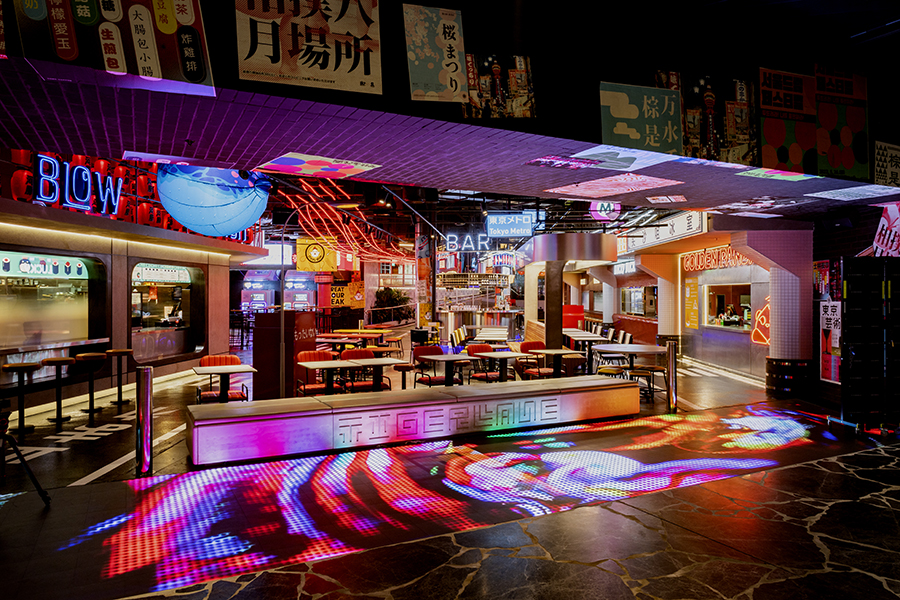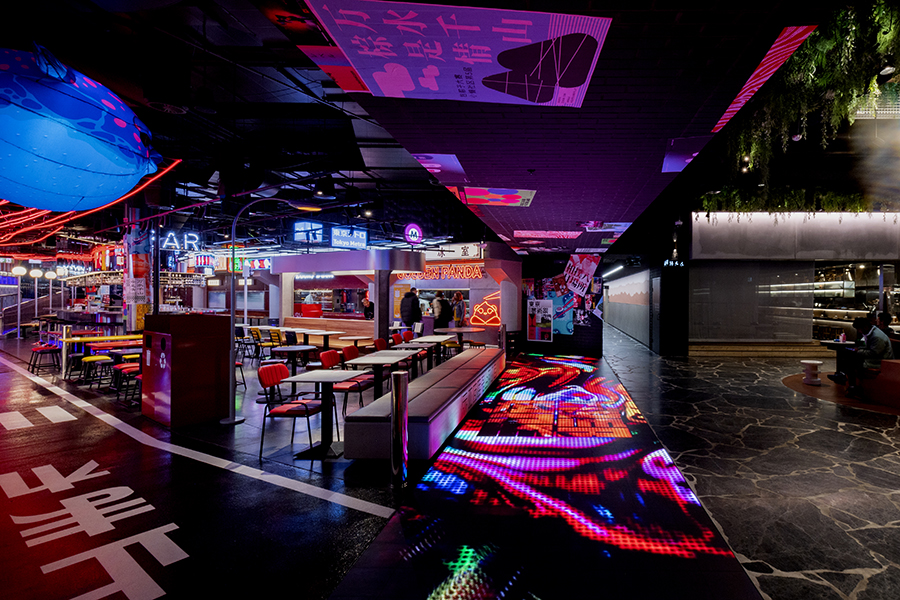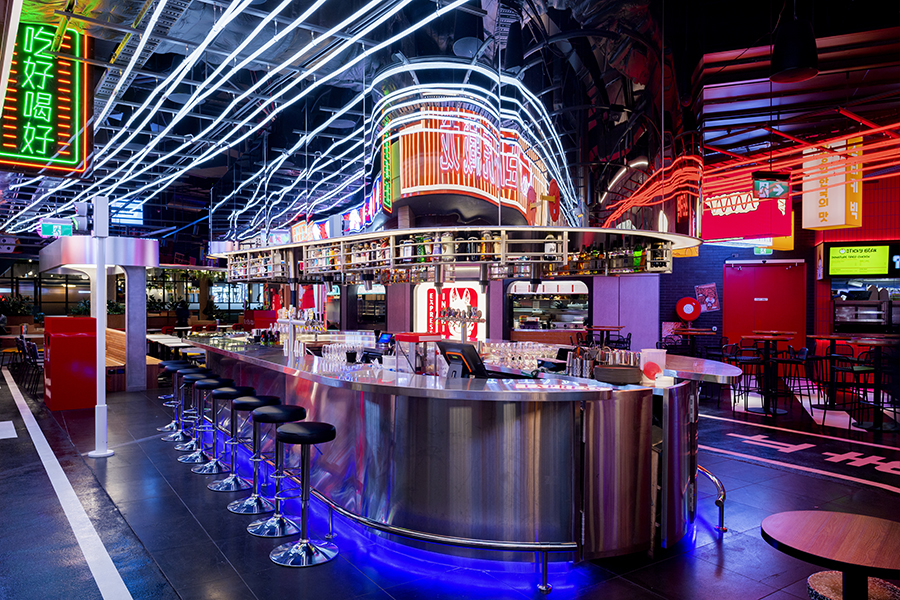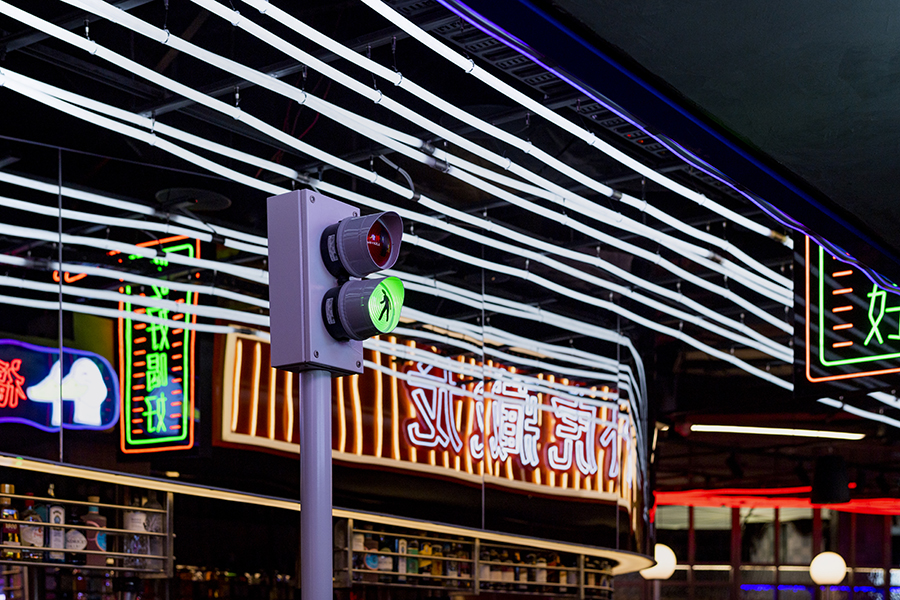Now that the dust has settled since its opening and Tiger Lane is proving to be a very successful precinct in QIC’s Canberra Centre, we asked Tomas Scerbo – Director of Interior Life, the designers for the precinct to reveal why his decisions run much deeper than surface finishes.
Imagine walking through a night market in Asia: the sounds, the aromas, the smoke surrounding you. You walk past the stalls and get tempted by the food offerings, end up getting a couple of different things, find a little table on a corner and hopefully wash it all down with a cold beer. You probably never gave the psychology behind each one of the choices you made much thought, but when we set out to create Tiger Lane, they became the foundation for our design.
We studied customer behaviours in food markets and understood what works best to drive up engagement and sales. The first design decision we made was to avoid having a central street flanked by shops. Instead, we created two narrower ones, forcing customers to walk really close to the shopfronts, engaging with the product just like they’d do in a night market. Next, we removed all drinks service from the food stalls, making them focus only on what they do best.
By having a central bar in the middle, we encouraged a “hopping” behaviour, where guests get food from more than one venue and end up sitting around the bar, completing the experience with great cocktails or beers on tap. This has been instrumental in driving per-head spending to levels exceptionally above comparable offerings.
This kind of strategic thinking isn’t restricted to the customer. When masterplanning the precinct, we realised the opportunity to radically cut operational costs from the drawing board. There are two world-class restaurants – Taki and Mrs Wang – flanking the precinct.
When designing their kitchens, we did so in a way in which they can serve both their customers and the street outlets at the same time. As a result, we have two kitchens serving six venues, driving costs radically down and enriching the quality of the street food offering at the same time.
Thinking of Design as a veneer that embellishes things is fundamentally wrong. Good design means strategic thinking and design decisions can drive revenue up and cost down in ways that are hard to imagine before. I hope this piece helped shine a bit of light on what actually lies behind a successful design.


